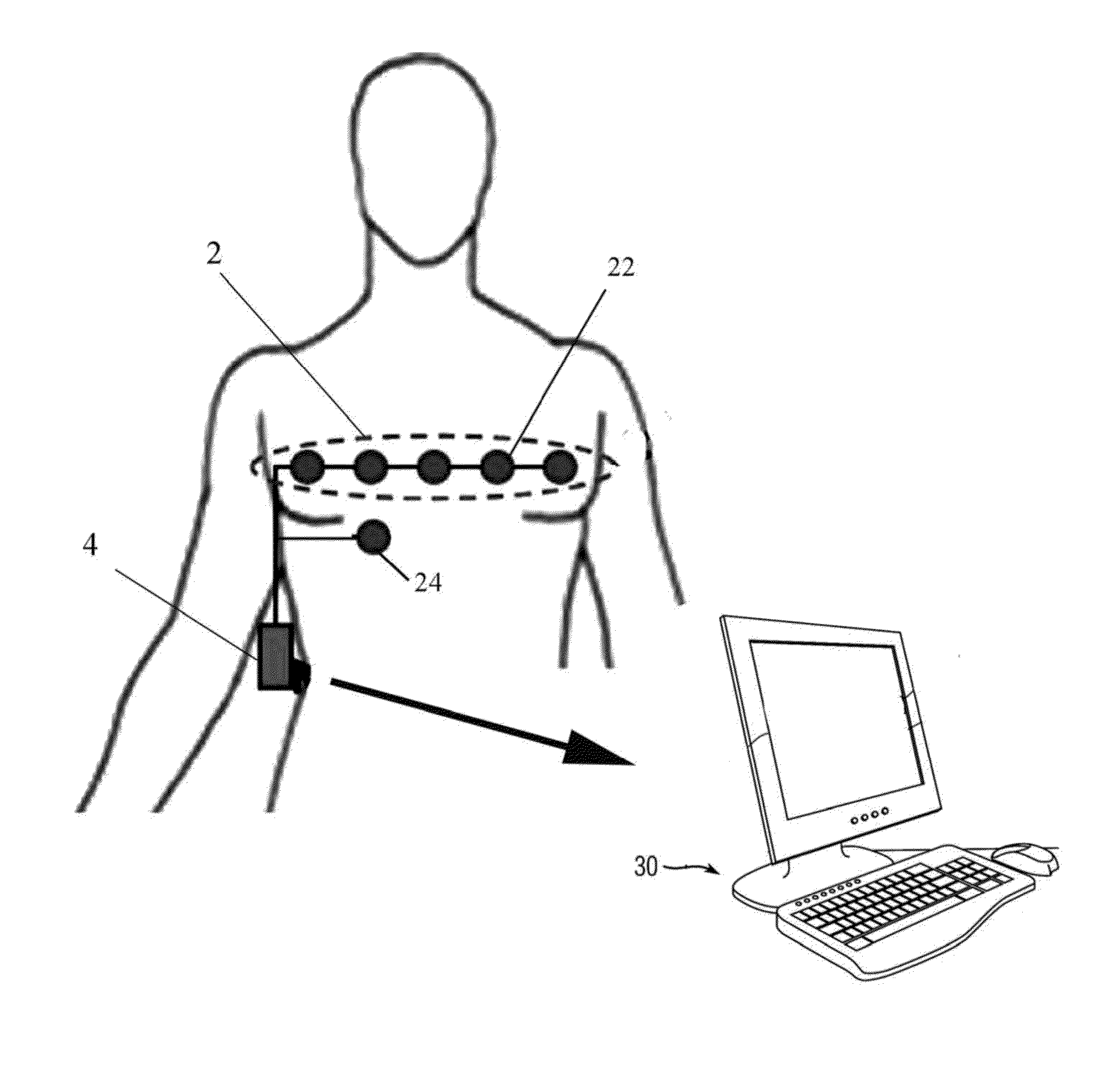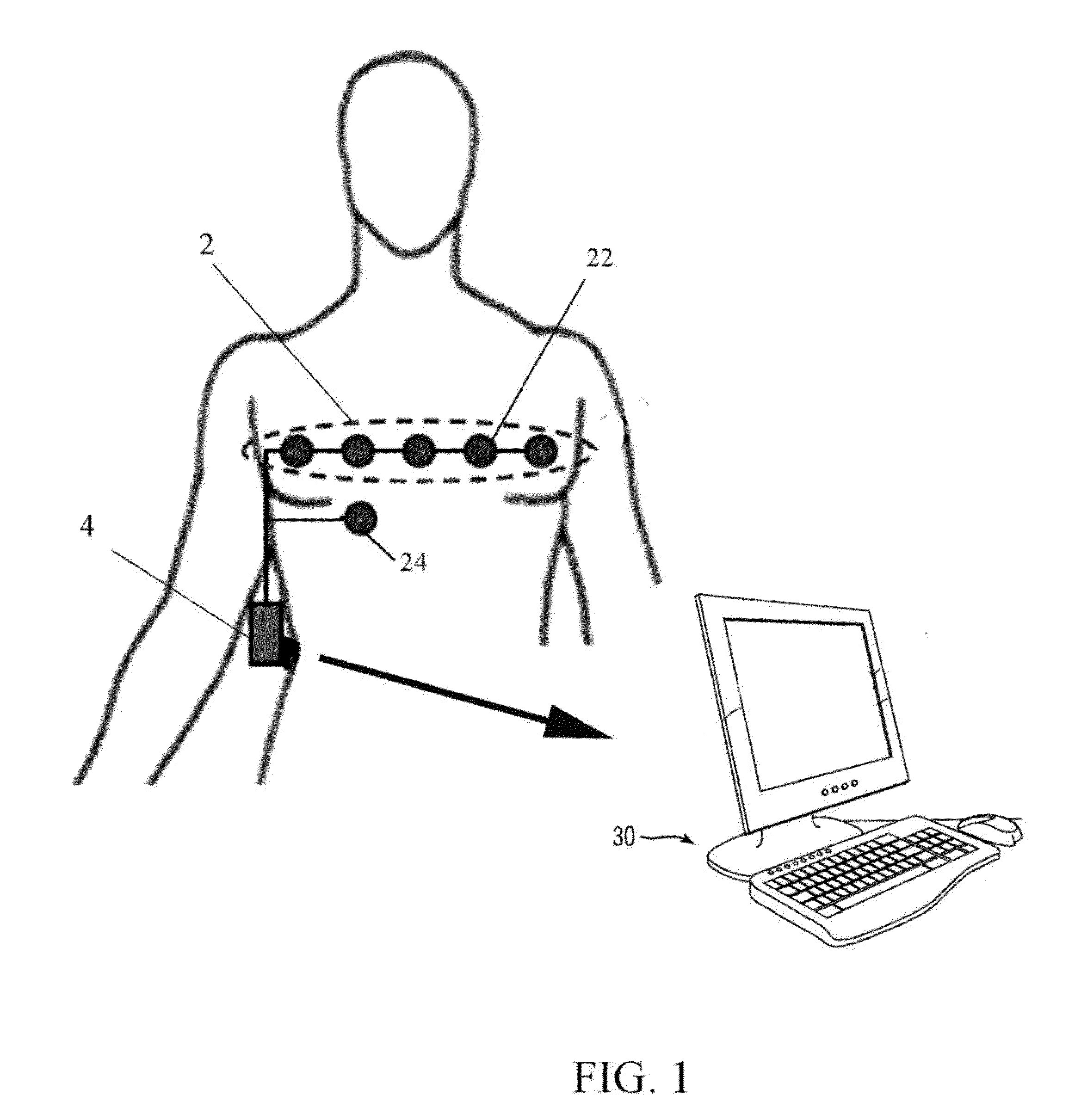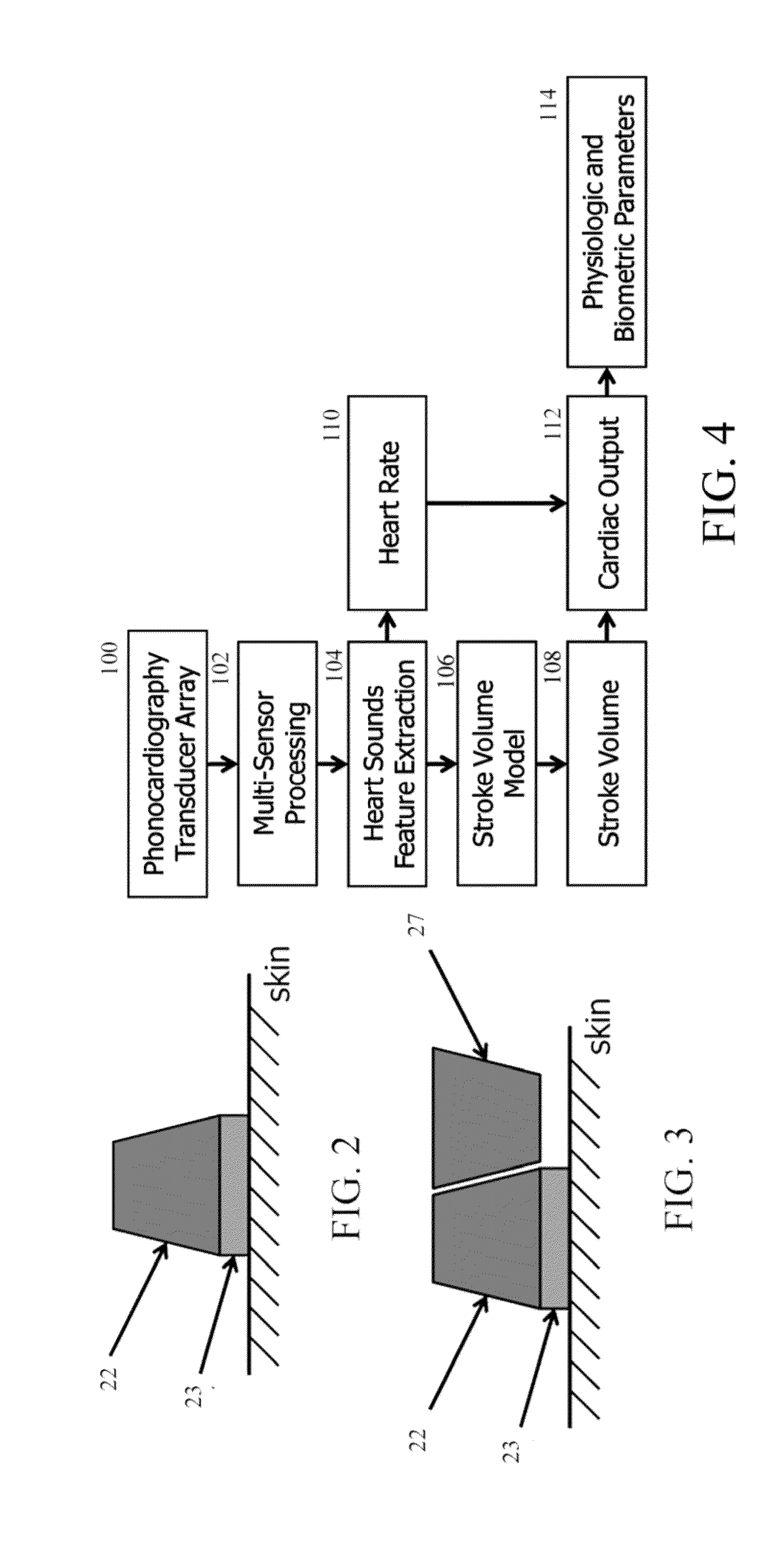Method and apparatus to monitor physiologic and biometric parameters using a non-invasive set of transducers
a non-invasive set of physiologic and biometric parameters technology, applied in the field of methods and apparatus for monitoring hemodynamics in the human body, can solve the problems of not being suitable outside of controlled medical facilities, requiring a degree of invasiveness, and current technologies for monitoring hemodynamics non-invasively are not particularly suitable, so as to improve the signal to noise ratio of phonocardiography transducers, improve the accuracy of determination and extraction of all heart sound features, and improve the effect of signal clarity
- Summary
- Abstract
- Description
- Claims
- Application Information
AI Technical Summary
Benefits of technology
Problems solved by technology
Method used
Image
Examples
Embodiment Construction
[0055]The present invention is a robust, reliable, sensitive, and non-invasive method and system for the detection of conditions symptomatic of central fluid and blood volume, including dehydration, hypovolemia or hypervolemia, cardiac abnormalities, wound management, and / or guidance of fluid resuscitation. The method and system achieves this by referencing time based features from phonocardiographic signals using an improved signal processing algorithm. Such a system can be utilized for monitoring hydration status (e.g., dehydration, electrolyte imbalance), circulating blood volume (e.g. hypervolemia, hypovolemia), and / or guiding fluid resuscitation.
[0056]As used herein, “stroke volume” is the volume of blood pumped from the ventricle of the heart into the circulatory system of the body. The stroke volume is the difference between the End Diastolic Volume of the ventricle and the End Systolic Volume of the ventricle.
[0057]As used herein, “cardiac output” refers to the volume of blo...
PUM
 Login to View More
Login to View More Abstract
Description
Claims
Application Information
 Login to View More
Login to View More - R&D
- Intellectual Property
- Life Sciences
- Materials
- Tech Scout
- Unparalleled Data Quality
- Higher Quality Content
- 60% Fewer Hallucinations
Browse by: Latest US Patents, China's latest patents, Technical Efficacy Thesaurus, Application Domain, Technology Topic, Popular Technical Reports.
© 2025 PatSnap. All rights reserved.Legal|Privacy policy|Modern Slavery Act Transparency Statement|Sitemap|About US| Contact US: help@patsnap.com



